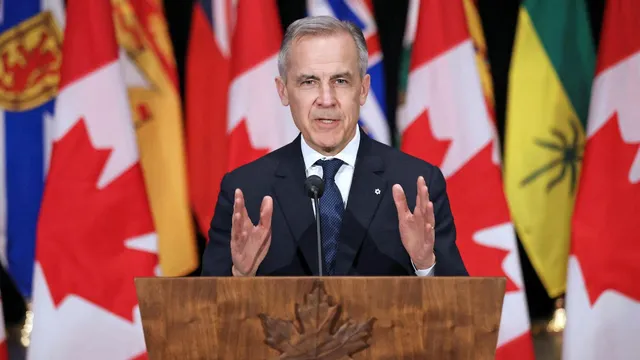
Energy conflict threatens to fracture Canada
2025-05-22 00:00- The 2025 federal election results reaffirmed the historical geographic split in Canada, with the Liberals retaining power but not achieving a majority.
- Quebec is receiving significant equalization payments while the resource-rich western provinces are not, heightening tension between regions.
- Conflict over energy resources is raising questions about potential separation of western provinces from Canada.
Express your sentiment!
Insights
Canada is facing significant political tensions that threaten its unity, primarily due to energy-related issues. The recent federal election in 2025 reinforced the longstanding geographic divide within the nation, with the Liberal party regaining plurality but lacking majority support. The Liberals, under the leadership of Mark Carney, have remained in power despite significant unpopularity, especially in the western provinces rich in oil and gas resources. Political dynamics in the country have shifted, igniting questions around the future of energy production amidst severe opposition from parties like the Bloc Québécois. The Bloc Québécois, a party that focuses on Francophone interests in Quebec, has taken a firm stance against the oil and gas sector, asserting that there is no future for these industries in Canada. This declaration has raised concerns within the energy-rich provinces like Alberta and Saskatchewan, where the economic foundation heavily relies on these resources. Alberta's Premier, Danielle Smith, has emerged as a prominent voice opposing these sentiments, suggesting a growing rift between the western provinces and the federal government. The existing equalization payment system further exacerbates regional tensions, with Quebec receiving substantial financial support from the national government, while western provinces contribute significantly to the national economy but receive little in return. In 2025, Quebec was allocated $136 billion Canadian, in stark contrast to the zero financial support provided to Alberta and Saskatchewan. Such divides have led political observers to speculate whether the longstanding tensions could push provinces towards considering separation as a viable option. As discussions around energy and environmental policies continue, Prime Minister Mark Carney faces a daunting choice: pursue aggressive Net Zero targets or find a balance that restores harmony among Canada’s provinces. The implications of these choices are significant, as the potential for civil unrest or even separation looms over the nation’s landscape. The ongoing struggle between environmental goals and economic wellbeing illustrates the precarious nature of Canadian unity in the face of rising regionalism.
Contexts
The Canada energy crisis of 2025 highlights a critical juncture for the nation as it grapples with a rapidly changing energy landscape. In recent years, reliance on fossil fuels has been increasingly scrutinized, with a significant push towards renewable energy sources. However, even as investments in solar, wind, and hydroelectric power have grown, the transition has not been as swift or seamless as many had hoped. This transition has revealed gaps in infrastructure, regulatory frameworks, and technological advancements necessary to support a complete shift to sustainable energy solutions. As the country aims for net-zero emissions by 2050, the urgency of addressing these issues has become paramount to avoid a full-blown energy crisis that could impact economic stability and societal well-being. The high demand for energy during the cold winter months has exacerbated the situation, leading to rolling blackouts and significant stress on the electric grid. Decreased output from traditional energy sources caused by aging infrastructure, combined with a lack of storage solutions for renewable energy, has left the system vulnerable. Furthermore, fluctuations in global energy prices and competition for resources have put additional pressure on Canadian energy markets. Consumers are seeing increases in energy prices, and many households are facing energy poverty as a result. As climate change continues to impact weather patterns, the unpredictability of energy supply has further complicated the situation in both urban and rural areas. In addition, regulatory hurdles and insufficient political will have hindered the implementation of necessary reforms. The provincial and federal governments must work closely with energy providers to create cohesive policies that support energy efficiency, invest in grid modernization, and develop robust energy storage solutions. Collaborations between governments, businesses, and research institutions are crucial for fostering innovation and creating a resilient energy economy. Engaging with Indigenous communities and ensuring their involvement in resource management and decision-making is also an essential element that has been increasingly recognized in recent years. As Canada continues to navigate this energy crisis, urgent investment in clean technologies and sustainable practices is necessary to mitigate long-term damage. Education and outreach will play a vital role in fostering a culture of energy conservation and encouraging citizens to adopt more environmentally friendly habits. Furthermore, public-private partnerships can accelerate the deployment of clean energy projects and enhance grid resilience. By prioritizing a balanced and forward-thinking approach, Canada can not only address the immediate challenges posed by the energy crisis of 2025 but also lay the groundwork for a sustainable and secure energy future.